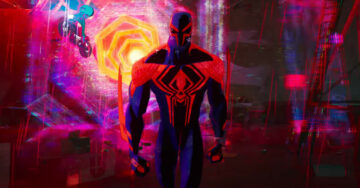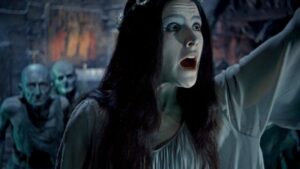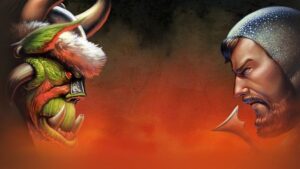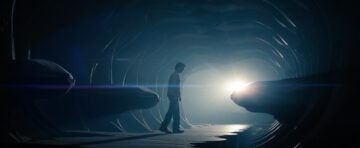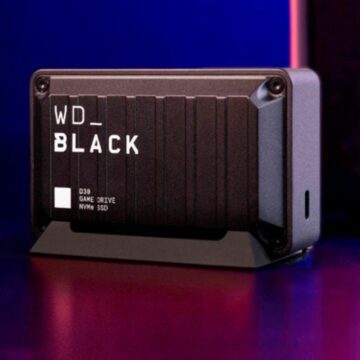When the title of a new TV series begins with “Star Trek,” it’s natural to be intimidated. The Trek franchise has a well-earned reputation for having a dense canon, which has been built up over the course of 55 years and more than 800 canonical installments. It’s possible to start any individual series and eventually get your bearings, but many of them aren’t terribly welcoming unless you’ve absorbed the prerequisite mythology, either directly or through cultural osmosis. Star Trek: Prodigy, the new animated series that premiered Oct. 28 on Paramount Plus, fully breaks from this trend, presenting Star Trek in an entirely new way, and becoming the most accessible jumping-on point for the franchise since J.J. Abrams’ 2009 film reboot.
Most Star Trek spin-offs presume a level of pre-existing engagement in the franchise, and use their first episodes not to sell viewers on Star Trek, but to sell them on this Star Trek. They’re in the business of iteration and contrast, of proving that this incarnation has something sufficiently different in store. For 1987’s The Next Generation, the very premise of doing Star Trek without familiar characters Kirk and Spock was novel enough to differentiate the series. Deep Space Nine and Voyager are distinguished by their placement in space, Enterprise and Discovery by their placement in time, Picard and Lower Decks by their vastly different approaches to the legacy of The Next Generation. Every series has developed its own identity, but each is defined from the outset by its relationship to what’s come before.
But the double-sized premiere of Prodigy seems to be entirely in its own lane, refreshingly unconcerned with previous Star Trek series until two minutes before the closing credits. The first episode, “Lost and Found,” takes place on the mining colony asteroid Tars Lamora, where teenage prisoner Dal R’El (voiced by Brett Gray) is making his umpteenth unsuccessful escape attempt. Over the course of this opening hour, we see Dal assemble a ragtag group of fellow enslaved workers to hijack an advanced derelict starship that’s buried within a crevice of the asteroid.
Anyone even vaguely familiar with Star Trek will recognize this ship, the USS Protostar, as having all the aesthetic markers of a Starfleet vessel. Dal and his companions, however, do not — in fact, they’ve never heard of Starfleet or the United Federation of Planets that it serves. To them, it’s just a way out of bondage. The fact that it’s also their gateway into a diverse space utopia only sweetens the deal. They’re in the middle of their own space adventure, only to discover at the last minute that they’re on Star Trek, whatever that is.

Shifting the perspective of the characters from seasoned professionals coping with new wrinkles to complete outsiders learning the ropes was a deliberate decision made by series creators Kevin and Dan Hageman (Trollhunters, LEGO’s Ninjago: Masters of Spinjitzu), as they explained at New York Comic Con earlier this month. Star Trek head honcho Alex Kurtzman tasked them with devising an entry point through which young, uninitiated viewers might find their way into Star Trek, and determined that the best way to do that would be via characters who would be introduced to it themselves.
Exploring the Star Trek canon is typically easier with a guide, and the crew of the Protostar have one of their own — a holographic training program in the likeness of Star Trek: Voyager’s Captain Kathryn Janeway (Kate Mulgrew). Introduced at the end of “Lost and Found,” Hologram Janeway is the only element that places the episode in a particular place or time in the Star Trek universe.
Prodigy has a few other, looser ties to the franchise’s past. Three members of the main ensemble represent races from previous Star Trek works, but each is more obscure than the last. Jankom Pog (Jason Mantzoukas) is a Tellarite, the least recognizable of the Federation’s four founding species (alongside Humans, Vulcans, and those blue guys with the antennae, the Andorians). Zero (Angus Imrie) is a Medusan, a non-corporeal entity whose people haven’t been heard from since the 1968 episode which introduced them. Rok-Tahk (Rylee Alazraqui) is a Brikar, a species that originates in Peter David’s tie-in novels from the 1990s, and has never been depicted on screen before. Since even the established pieces of lore are plucked from obscurity, viewers for whom “Lost and Found” is their very first Star Trek aren’t missing anything. At least for now, dyed-in-the-wool Trekkies have almost no advantage over the new kids.
This distance from the larger Star Trek universe won’t last, and it’s not meant to. The Hagemans have already indicated that the Protostar’s course will take them closer to Federation space, and that they’ll encounter more familiar characters and cultures over time. This doesn’t have to make the series any less approachable to new viewers. As the young crew journeys in from the outskirts, hopefully new fans can be gradually acclimatized. Success would mean that a young viewer can explore the wider Star Trek library with Prodigy as their compass, not their homework agenda.
The first episode of Star Trek: Prodigy’s 10-episode opening season is now streaming on Paramount Plus, with new episodes arriving on Thursdays.
Source: https://www.polygon.com/22753008/star-trek-prodigy-review-kate-mulgrew-janeway
- advanced
- ADvantage
- Adventure
- aesthetic
- alex
- All
- animated
- BEST
- business
- closer
- Compass
- Credits
- Crew
- deal
- derelict
- developed
- distance
- engagement
- Film
- First
- Franchise
- gray
- Group
- guide
- head
- hijack
- homework
- HTTPS
- Humans
- Identity
- IT
- kids
- learning
- Level
- Library
- Making
- Members
- Mining
- New York
- Other
- People
- perspective
- planets
- Plus
- premiere
- professionals
- Program
- relationship
- Screen
- sell
- Series
- Space
- Star Trek
- Starship
- start
- store
- streaming
- success
- The
- time
- Training
- tv
- United
- viewers
- WHO
- within
- workers
- works
- years
- zero


